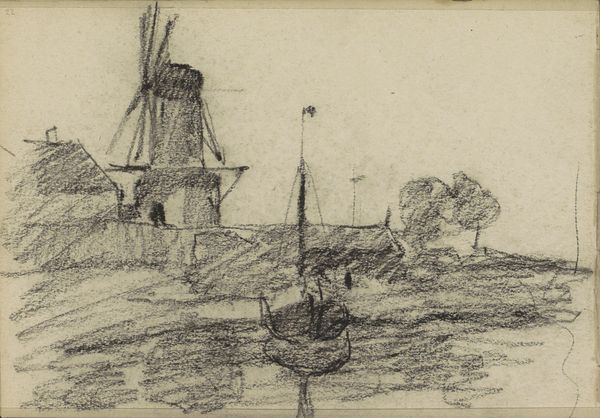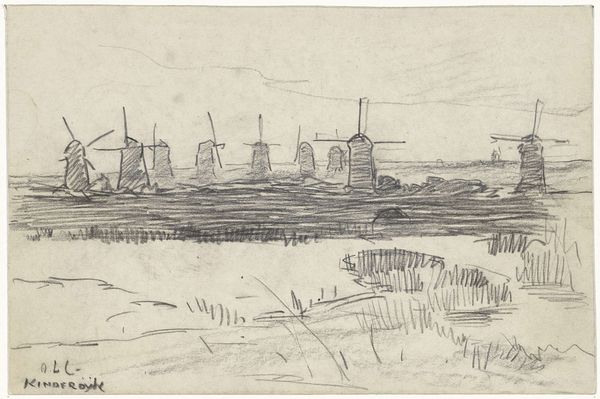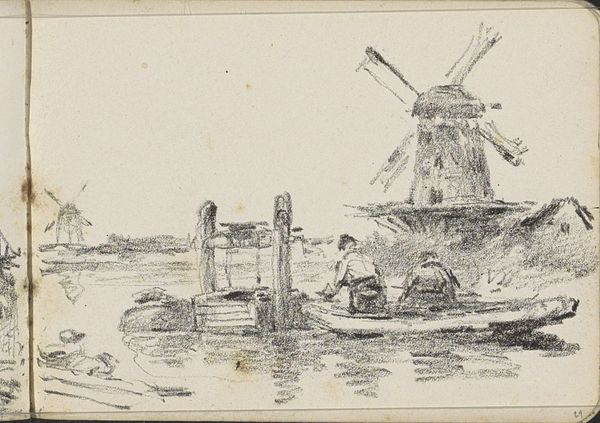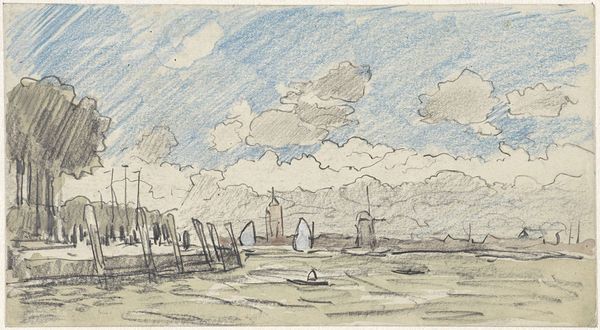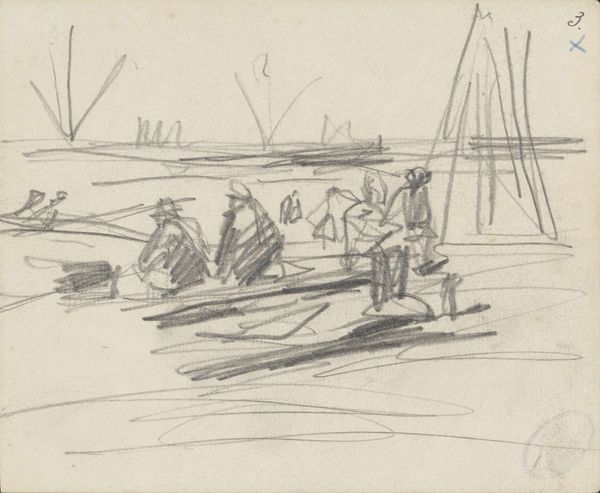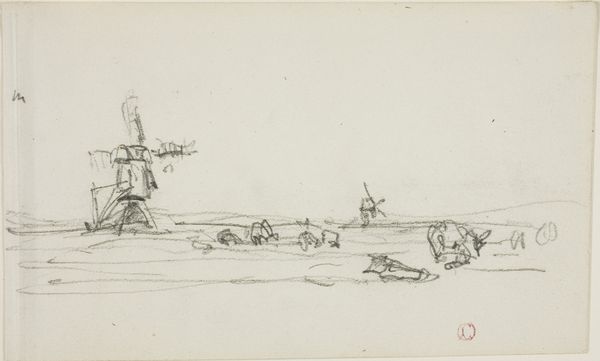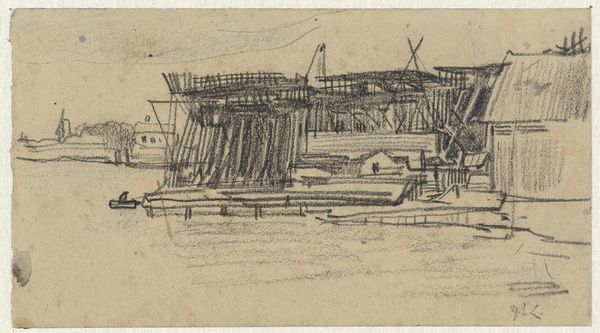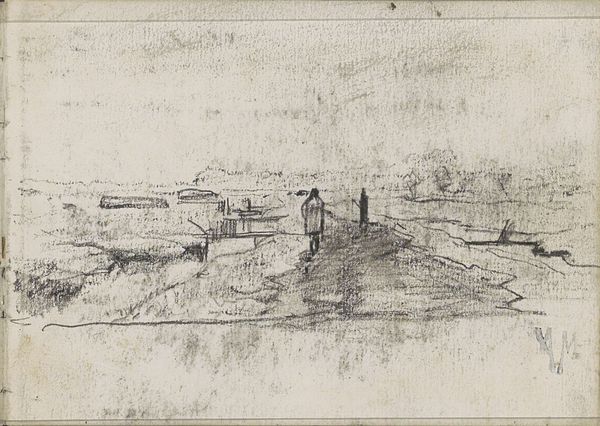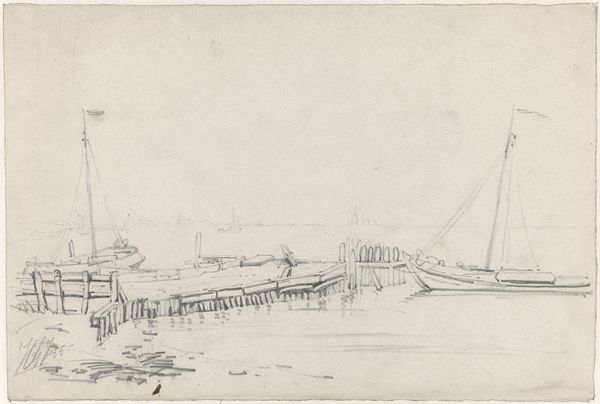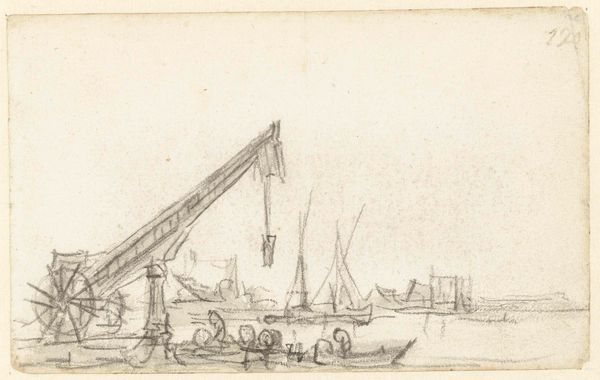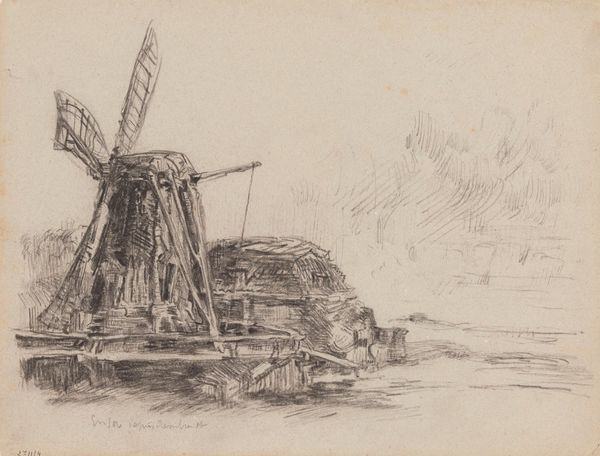
drawing, pencil
#
architectural sketch
#
drawing
#
quirky sketch
#
pen sketch
#
landscape
#
personal sketchbook
#
sketchwork
#
pen-ink sketch
#
pencil
#
pen work
#
sketchbook drawing
#
storyboard and sketchbook work
#
sketchbook art
#
realism
Dimensions: height 105 mm, width 170 mm
Copyright: Rijks Museum: Open Domain
Curator: Adolf le Comte sketched "Windmills in Overschie" around 1900, using pencil and ink to capture this Dutch scene. Editor: There’s an almost wistful quality to it. The stark lines and muted tones create a serene yet somewhat melancholic atmosphere. The composition guides the eye across the water, past those pilings, towards the row of windmills perched on the horizon. Curator: Indeed. Overschie was a village undergoing transformation at the turn of the century, and Le Comte was an architect by profession. These sketches represent a professional engagement with the Netherlands that’s rapidly modernizing and globalizing around him. The mills, quaint as they appear to us now, were also instruments of economic development and sites of working-class labor. Editor: I’m curious about the varying weight of the lines. Notice the darker, almost frenetic strokes defining the primary windmill compared to the lighter touch used for those receding into the distance. It generates depth. How does the treatment of light and shadow play into this? Curator: Note how little embellishment the landscape receives in relation to the iconic structures; there’s more ink spent rendering the mechanisms of the windmills, and comparatively little attention given to natural elements like water. It makes sense for an architectural sketch that emphasizes constructed forms rather than landscape backdrops. Editor: I see what you mean. The deliberate marks clearly foreground a specific type of built environment—though it is quite subtle, so easy to miss. There’s a real focus on capturing a precise, even technical understanding through the simple stroke of a pen, the way it records visual data. Curator: Precisely. This contrasts sharply with romantic depictions of windmills one sees throughout the history of art. In some ways, that might suggest a nascent environmentalist sensibility in this artist, or in the Netherlands more broadly. After all, these historic mills aren't so different from today's energy farms. Editor: So it asks the question: what are we seeing here--nostalgic imagery? Or is it forward thinking? Regardless, thank you. It definitely provokes a re-evaluation of its own medium, making me consider what a humble sketchbook and pencil can actually achieve in revealing meaning. Curator: I agree. Hopefully, listeners can develop new appreciation of this work through that same, meticulous observation, one that asks us to reconcile romantic notions with functional ones.
Comments
No comments
Be the first to comment and join the conversation on the ultimate creative platform.
